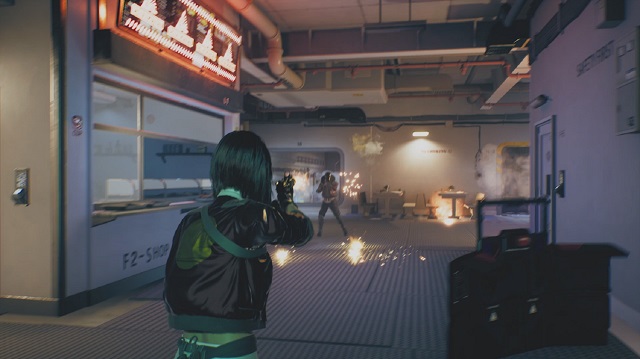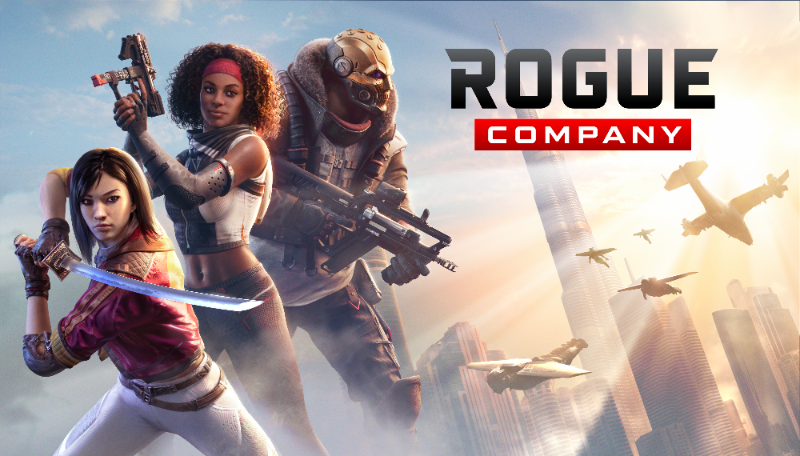In the increasingly competitive hero shooter space, a game’s success is measured by the strength of its characters. You can’t only have characters that look interesting or offer useful abilities, you have to have both.
Built by Hi-Rez’s First Watch team, Rogue Company has both. Its cast of heroes is modern, each of them unique from the pack, and collectively, they give Rogue Company a style I appreciated right away, even as other elements of the game are quite familiar.
It’s a bit rough at launch, as the game is still technically in beta, but there’s more good than bad in this new contender for your competitive shooter timeshare.
Rogue Company is a competitive team shooter that pits two teams of four against each other in quick rounds of familiar, hyper-competitive game modes. It offers both cross-play and cross-progression.
In these early days, though other game modes have been detailed, there are just two on offer: demolition, elsewhere called search and destroy, and a deathmatch-like mode where players count down their remaining lives until one team reaches zero and loses.
Both modes are fun, but it’s demolition where the game really shines. It brings with it the same precious attention to detail as some of the PC platform’s most intense shooters, and Rogue Company similarly feels like so much rides on your performance, especially in a no-respawn mode where you know your team is watching you when you’re the last alive.
Rogue Company unabashedly borrows from games like Counter-Strike, and more recently Valorant. It was revealed before the latter, but it still feels like someone on the team was privy to the details at Riot. Though, perhaps that’s cynical.
In any event, maps look quite like those seen in other games like it. More important are the maps’ dimensions, with sightlines carefully considered; no cover angle or corner peek has been overlooked. That gives a lot of legitimacy to Rogue Company‘s desire to be taken seriously in the competitive shooter arena.
I do wish there was more visual variety in the maps right now. Each of them feels like a sunny vista with a few ramps, interiors, and a zipline or two. They’re still conducive to smart team play, which takes precedence, but they all sort of blend together in any given play session.
Time to kill isn’t as unforgiving as other games, and regen is fairly quick too. The end result is a game that doesn’t feel as frustrating as something like Counter-Strike, where a protruding elbow may get you killed in an instant.
Rogue Company‘s shooting mechanics are reliable and rewardingly varied across its many classes and weapons. Third-person shooting feels more variable than first-person, but I have no complaints regarding the game’s shooting.
The real highlight of Rogue Company is its roster of heroes — or more appropriately in this case, anti-heroes, it seems. Any one of the dozen or so shooters feels like they could be auditioning for the Suicide Squad, but I don’t say that as a bad thing. You get who they are just by looking at them, and no two could easily be confused for each other, even as they all look like they graduated from the same school of hard knocks.
Ultimately, it’s their hero abilities that define them more than their masks, blades, or outfits anyway, and Rogue Company‘s variety in this regard is excellent. My early main is shaping up to be Ronin, who wields a blade and bomber jacket with equal flair. More important is her active ability, which gives me a one-time explosive knife to throw. Where it lands becomes like a proximity mine, or it can connect with enemies directly.
Others can throw down defensive walls, heal downed allies in a flash, or hack the map to see enemies’ locations. It feels like there’s someone for every play style.
I’ve been pretty glowing thus far, but as I alluded to in the intro, it’s not all wonderful out of the gate. The game’s commitment to a super competitive scene is well-intentioned and pretty well-executed, but in an effort to also run an in-game store, the game gets dragged down by some faulty mechanics involving some superfluous stuff.
Emotes are available in the Rogue Company, both paid and free, but there’s such a lag between choosing one and seeing it play that they’re rendered pointless. The only time you’ll ever have to use an emote is at the end of a round, and the game throws you back to the next one so quickly that the stutter causes you to never really see the emote anyway.
Unfathomably, the game is also selling in-game currency right now, but there’s nothing to spend it on. Surely the store will be stocked in time, but it just looks bizarre to offer an in-game cosmetic item shop without actually putting anything in it.

I like that there will be different clothing options for the characters, which I find that to be pretty critical to any hero-based game. But the emotes only get in the way, and even then, they are implemented so poorly as to be irrelevant. It feels like Rogue Company is designed with all the competitive spirit of Counter-Strike, but still wants to have the absurd dance moves of Fortnite, and the two styles just don’t mesh in Rogue‘s fairly realistic style.
That’s too bad, because otherwise, that style is a highlight. Players are introduced with the slow-motion walk-up of an action movie, and each match begins with players quickly gliding onto the map, which also serves tactical purposes. An original hip hop soundtrack and some more Suicide Squad styled voice lines complete the game’s aesthetic: focused but just a little silly.
The game is in “beta” in the Fortnite sense; it’s out and offers a lot but we should expect bugs. Of those, I found them usually in the menus. Game audio would sometimes disappear, though never during matches. A few times the character select screen didn’t appear, which is a huge problem, even as I was able to blindly navigate the screen’s options without actually seeing it.
It’s neither a bug nor a feature, but the early days of the game seem mired by bad-sports in the community too. Final kills in a round usually lead to the lobby watching someone getting teabagged or repeatedly shot in the head as they lay defeated. I haven’t used voice comms with random players, but a few times I had teammates blasting music through their speakers too.
To some extent, this is behavior we can expect in all games, but some platforms do lend themselves to more toxicity than others, and I worry the hyper-competitiveness of Rogue Company is quickly breeding contempt for one another in its player base.
Pros
- Competitive modes with reliable mechanics to match
- Characters are varied and each is enticing
- A familiar setup with a few fun wrinkles
Cons
- Early bugs include menus and audio disappearing
- Feels likes it’s pulled in two conflicting directions at times
- Playerbase seems comprised of unsporting jerks
Hi-Rez has again taken what worked elsewhere and made it work for them. Despite the success of Smite and Paladins, I’d estimate Rogue Company has the highest growth potential of any game from the studio yet, thanks to interesting characters pitted in a world of competitive and fun gameplay.
There are bugs to work out and jerks to suspend, but I’m still excited to drop into more rounds with my ragtag crew of mercenaries.
Image source: Hi-Rez Studios








Published: Jul 29, 2020 01:52 am